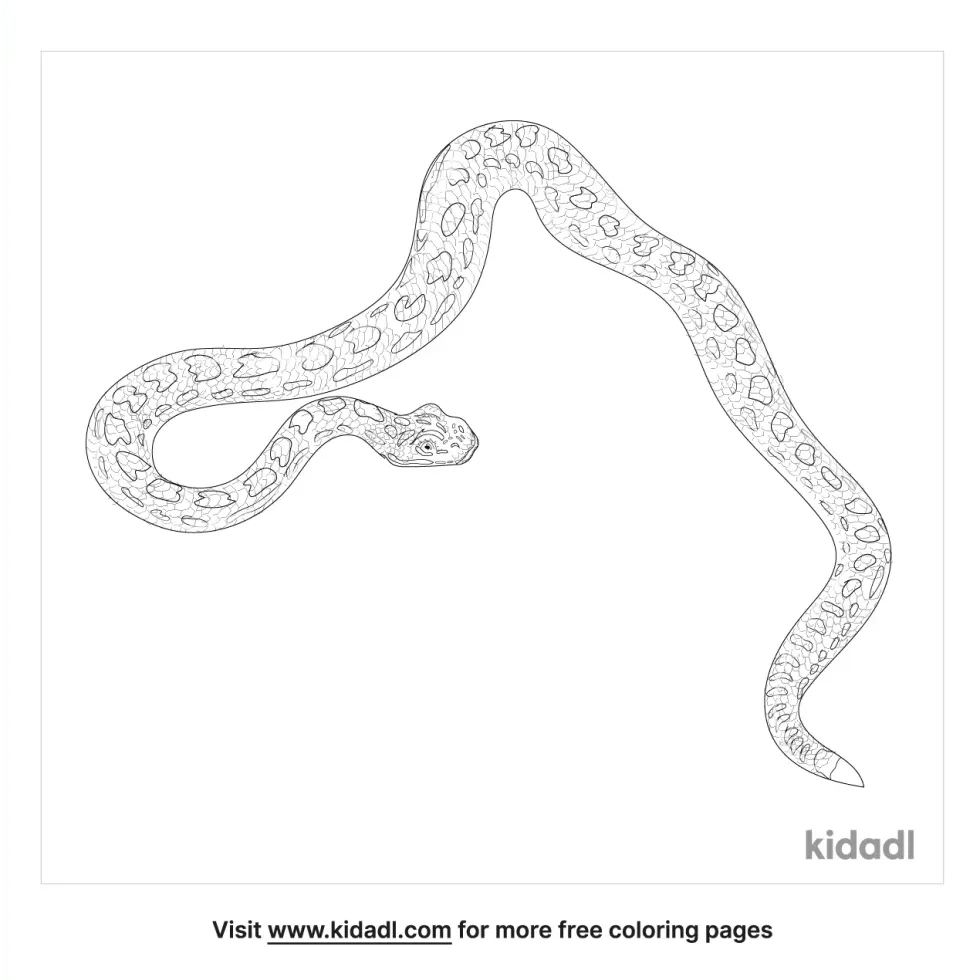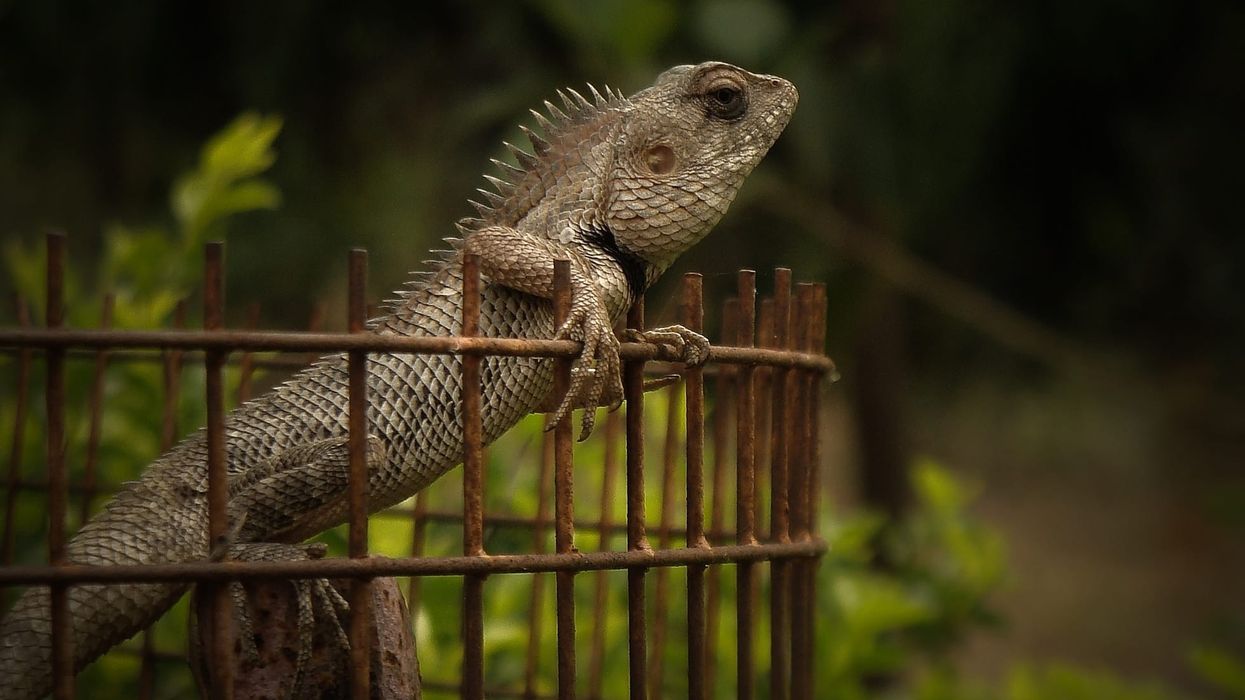Also known as the yellow rattlesnake, it is a type of venomous pit viper species found in the western United States. Specifically in Wyoming, Utah, and Colorado. It was considered as a subspecies of the prairie rattlesnake, however, recent studies state that it is actually a subspecies of the western rattlesnake.
Their size averages around 20-30 in (50-75 cm) in length, and weigh about 4.2-7.1 oz (120-200 g).
This deadly snakes venom is one of the most toxic in all of Colorado, carrying potent and toxic neurotoxins that mess up the nervous system. Some studies show that their venom is even more toxic than some cobras.
This venomous and dangerous snake often makes contact with people from the town of Green River, Wyoming. Typically a docile snake, people still get bitten.
This is mainly because they are either trying to catch it or kill it. In some cases, since this is a very well camouflaged snake that blends well with the ground, people sometimes step over them and get bitten.
If you like these facts about the midget faded rattlesnake, you may also want to check out our articles on emerald tree boa facts and gray rat snake facts.
Midget Faded Rattlesnake Interesting Facts
What type of animal is a midget faded rattlesnake?
It is a type of snake. If you are from Green River and if you ever find these snakes on your property, you should report it to the Wyoming Game and Fish Department for proper handling.
What class of animal does a midget faded rattlesnake belong to?
They belong to the Reptilia class.
How many midget faded rattlesnakes are there in the world?
There is no official count for their population.
Where does a midget faded rattlesnake live?
You can usually see them in a wide range of places such as rocky and arid basins, cold deserts, rock outcrops, exposed canyon walls, semi-desert shrub-land, riparian zones, and woodlands. They stay in the same place for years at a time.
What is a midget faded rattlesnake's habitat?
They can be found in North America and can be usually seen in eastern Utah, western Colorado, and southwestern Wyoming. There are only two poisonous snakes in Wyoming, the prairie rattlesnake, and the midget faded rattlesnake.
Although this species will occupy pretty much all types of terrestrial habitats that meet its geographic and elevation range of 7000 ft (2134 m), it still has a preference.
Anything over 11,000 feet (3,353 m) is too high an elevation for them. It loves the exposed rocky outcrops of the Green River formation for its denning habitat because they would use these rocks for shedding and parturition.
Who do midget faded rattlesnakes live with?
Contrary to popular belief, midget faded rattlesnakes are not solitary like other snake species. These snakes actually den in groups of up to 100 individuals.
How long does a midget faded rattlesnake live?
The lifespan of this venomous creature can range from 15-20 years.
How do they reproduce?
Mating usually happens in July and August after the snakes migrate from their denning area. In around August of the following year, the pregnant female will give birth to three to four hatchlings.
They measure around 7.5 in (19 cm) in length and weigh around 0.3 oz (8 g). The clutch size for midget faded rattlesnakes is relatively lower than other rattlesnake species. This small body size hinders the reproductive potential of these snakes.
What is their conservation status?
The conservation status of these snakes according to Colorado Parks and Wildlife department, midget faded rattlesnakes have been declared as a Species of Special Concern due to the decline of their populations. Like most snakes, the greatest threat to their existence and habitat is humans. The development of areas leads to the decline of their habitat and prey.
Midget Faded Rattlesnake Fun Facts
What do midget faded rattlesnakes look like?
If you see this snake species, it would be best to stay as far away from them as possible! They are usually light yellow or light brown in color with dark brown blotches on their body. Their earthy color patterns blend really well with their rocky surroundings and help them camouflage as a defense against local predators and prey.
How cute are they?
Admiring the beauty of snakes is subjective. Some are petrified from a mere glimpse of it, and some love snakes so much they keep small, non-venomous ones as pets. However, it is best to leave these rattlesnakes in their natural habitat.
This snake is small, so it could be more cute than scary.
How do they communicate?
This snake makes a very loud rattling noise to deter would-be predators and to make their presence known within the area.
How big is a midget faded rattlesnake?
This snake is small. In fact, it is the smallest member of the western rattlesnake species which is only about 20-30 in (50-75 cm) in length.
How fast can a midget faded rattlesnake move?
There are no official records on how fast these snakes move, however, they have movement patterns that vary by age and reproductive status.
Young ones and a gravid female would typically wander around (378 ft) 115 m away from the den and with about less than 12 ac (5 ha) of home range.
Adult males and non-gravid females on the other hand typically wander off about 2133-2625 ft (650-800 m) away from their den and have an average core area of 141 ac (57 ha) for males and 69 ac (28 ha) for female species.
How much does a midget faded rattlesnake weigh?
They are tiny and their weight range is from 4.2-7.1 oz (120-200 g).
What are the male and female names of the species?
There are no male and female names of this species, however, it has been observed that males move further away from the den compared to females.
What would you call a baby midget faded rattlesnake?
A baby or a little snake is called a hatchling or a neonate.
What do they eat?
Juvenile midget faded rattlesnakes primarily prey on lizards, and the adult diet revolves around 80% mammals and 20% lizards.
Are they poisonous?
The midget faded rattlesnake bite is extremely poisonous. In fact, the venom of these snakes is more toxic than some cobras and they are dubbed as one of the most venomous snakes in North America.
More often than not, the snake bites when distressed, usually from the ground in their habitat site, where its venom can immediately poison the blood.
Even its subspecies are highly poisonous. When you are on a field or site they frequent, take light steps and cover your feet and body with proper garments to avoid any incidents. Also, always go with a group and stay with that group.
Would they make a good pet?
Having a venomous animal for a pet puts everyone in your home at high risk for danger, so it would not be advisable to keep one as a pet.
Did you know...
In general, snakes use the same rocks every year for shedding and parturition.
They have a left and a right heart; the right part receives deoxygenated blood from the veins, and the left part receives oxygenated blood from the lungs.
Is the midget faded rattlesnake Endangered?
Although not listed as Threatened and Endangered, they have a very low reproductive rate due to the size of their body. In fact, the Wyoming Game and Fish Department encourages people to call them if they see these snakes on their property, to avoid mishandling and inevitable death of both human and snake.
Also, the Colorado Parks and Wildlife Department has declared these snakes as a Species of Special Concern due to the decline in their populations, so it is illegal to kill them.
What is the difference between a midget faded rattlesnake and a Great Basin rattlesnake?
The Great Basin rattlesnake is 16-64 in (40.6-162.6 cm) in length as compared to the Crotalus oreganus concolor with a length of only about 20-30 in (50-75 cm).
The distribution range of the Great Basin is much vaster. They can be found in western Utah, Arizona, Colorado, Nevada, Idaho, Grand Canyon, California, and Oregon. As compared to the other, which can only be found in Utah, Western Colorado, and Southwestern Wyoming.
Here at Kidadl, we have carefully created lots of interesting family-friendly animal facts for everyone to discover! For more relatable content, check out these black mamba facts and vine snake facts pages.
You can even occupy yourself at home by coloring in one of our free printable Midget faded rattlesnake coloring pages.










